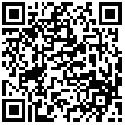Dog Training and Corrections
by The K9 Guy, 01-15-16No topic spurs more debate in training and behavior circles than the use of corrections. "Positive ONLY" advocates have spent the past decades marketing a theory that corrections have no benefit in teaching, cause stress, and degrade relationships. Any sensible observer of dog to dog interactions will see dogs correct each other, sometimes very physically. So if all corrections are bad, it doesn't seem dogs got that memo. I have a very strong science background, and appreciate the benefit of open thinking and THEORY. But science is dynamic, nature is stable. REAL WORLD observations provide a preponderance of evidence that dogs taught without ANY corrections consistently demonstrate poorer behavior, less respect of humans in a home, and unreliable obedience around even modest distractions.
Dogs DO use physical corrections when communicating with each other, so teaching without corrections misses an important feedback loop which dogs use innately. That does not mean teaching should be "corrections based"! Teaching using ONLY corrections is no more effective than teaching using ONLY praise. Read the last sentence again! A balance of comprehensive information is necessary for best learning, behaviors, and reliable obedience when teaching dogs. Fair (and well timed) corrections provide important feedback.
So what are corrections? They're usually physical in nature, and can vary from a pressured touch, to the use of a training collar. Verbals alone, redirection, and removal of attention are NOT meaningful corrections to a dog. Appropriate corrections are instructional, non-emotional, and fair. They stop problem behaviors, gain attention (improve listening), build respect, and improve reliable obedience. Inappropriate corrections may cause anxiety, confusion, intimidate, or even agitate a dog. Good trainers work to help owners develop an instructional language with their dog(s) that allows them to reach best potentials.
Various tools can assist in the correction process. While "positive ONLY" advocates often claim tools used to correct are cruel (or can cause harm), owners must remember that only improperly used tools cause problems. Training tools are simply used to help gain a dog's attention, and to offer fair feedback. Skilled trainers use a variety of tools because dogs vary, as do owner goals.
I appreciate that some owners believe a dog can learn anything without corrections. An owner's dog is their responsibility, so training methods are also their choice. But does it really seem sensible that any living creature can learn robustly through rewards alone? Untrained (or poorly trained) dogs are far more likely to get injured, lost, or cause harm - so a broad human perspective is important for a dog's well-being.
Over the past few decades, theorists have made many owners feel all corrections are wrong. I'm a pragmatic person, and defer to what I see in nature as a much better yardstick. There's nothing wrong with using fair corrections to provide information. Good teachers do just that, as they foster stronger relationships and bonds with their dogs.







